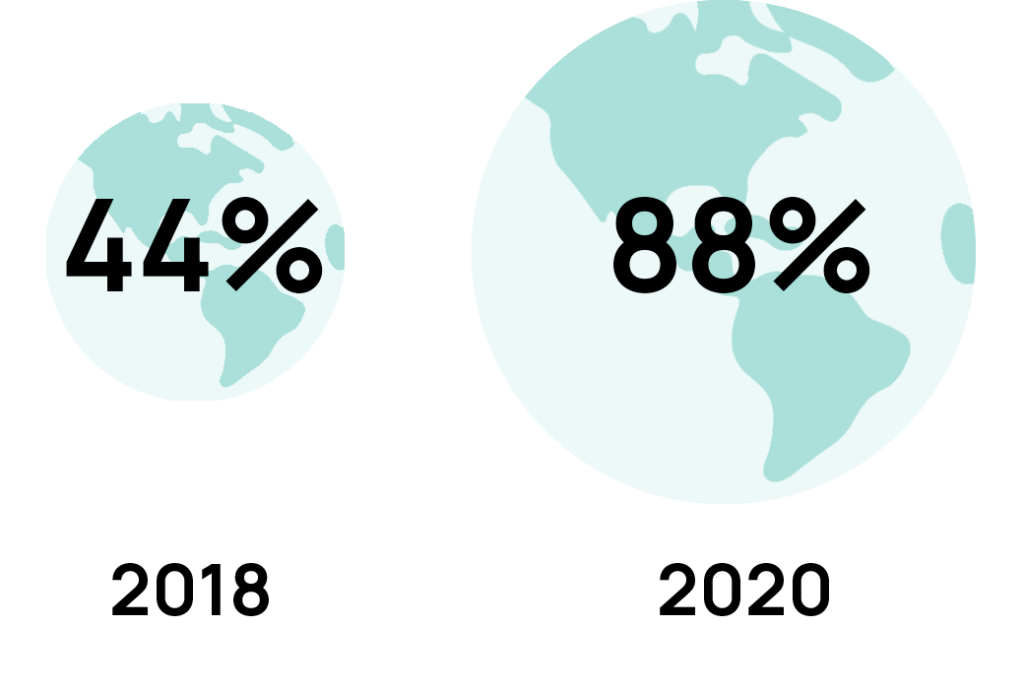Working Together in the ‘New Normal’
There’s a lot of uncertainty at the moment. How long will this COVID-19 situation go for? How long will this remote working arrangement last? How will we proceed afterwards?
Times of uncertainty requires a balance of careful analysis and decisive action.
That’s because—if left unchecked—uncertainty can consume ongoing mindshare which can, in turn, lead to inactivity. And teams that feel like they’re not getting things done become unhappy, which exacerbates an already tough situation.
Prior to the outbreak, many HR teams had been working to convince leadership to take on a bolder, more flexible working arrangement. The necessity for the arrangement now, as part of a business continuity plan, may be a crucial trial or litmus test for a broader, longer-term policy.
Naturally, leaders, even in high-tech companies, may be afraid of flexi-work. But the question is, how do you create a business continuity plan without flexi-work? Because, given the current circumstances, that’s now an underlying need.
The Remote Work Test
The latest telework statistics available from the Australian Bureau of Statistics indicate that, prior to the COVID-19 crisis, around one-quarter of Australian workers (24%) worked at least part of their time from home, even if only informally.

Additionally, as recently as 2018—despite the fact that remote workers are happier than those who work on-site in an office—44% of global companies didn’t allow any remote work at all.
However, in the current climate, a Gartner, Inc. survey of 800 global HR executives on March 17 found that 88% of organisations have encouraged or required employees to work from home due to coronavirus.
“As the COVID-19 crisis disrupts organisations across the globe, HR leaders must respond quickly and comprehensively, considering both immediate and long-term talent consequences,” said Brian Kropp, chief of research for the Gartner HR practice. “Our research shows that only a minority of employers plan to downsize or ask employees to take unpaid leave. Instead, most organisations are focusing on measures such as more effective use of technology and freezing new hiring to cut costs.”
The COVID-19 situation has also forced our leaders to work remotely. For many HR managers this is helpful because after this episode is over, they can go back to the leaders and ask them: ‘How did it work out?’; ‘Did your fear of flexi-work manifest or were they baseless fears?’
This could potentially help you further along your flexi-work arrangement policy. In fact, another Gartner survey found that 74% of CFOs say they expect to move at least 5% of their previously on-site workforce to permanently remote positions post-COVID-19.
Remote Work Tools
As the Gartner survey made mention, effective use of technology can cut costs, but it can also help your team be more productive and connected. Here are a few tools we use and recommend.
Team Communication
Messaging platforms like Slack can help streamline team communication pertaining to everything from department-specific projects to organisation-wide check-ins. Not only can Slack help you create and maintain focused conversations, but it can also reduce the endless stream of emails clogging up your inbox.
Video Conferencing
Video conferencing applications like Microsoft Teams and Zoom can help your team collaborate in real-time and have conversations virtually face-to-face. The former is even offering its premium paid features free until July 1 to help businesses keep operating remotely as they’re impacted by the coronavirus.
Project Management
Project management tools like Trello can make keeping projects moving forward intuitive and hassle-free. Use this tool to see in which stage your initiatives are at during any given time, assign people to certain tasks, and keep everyone on schedule.




